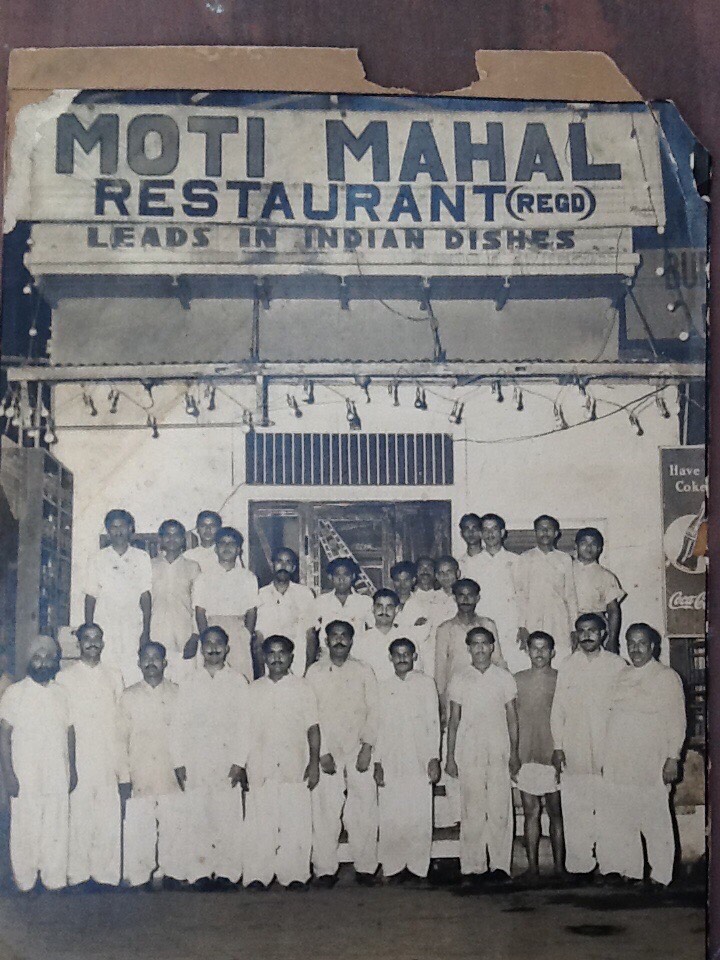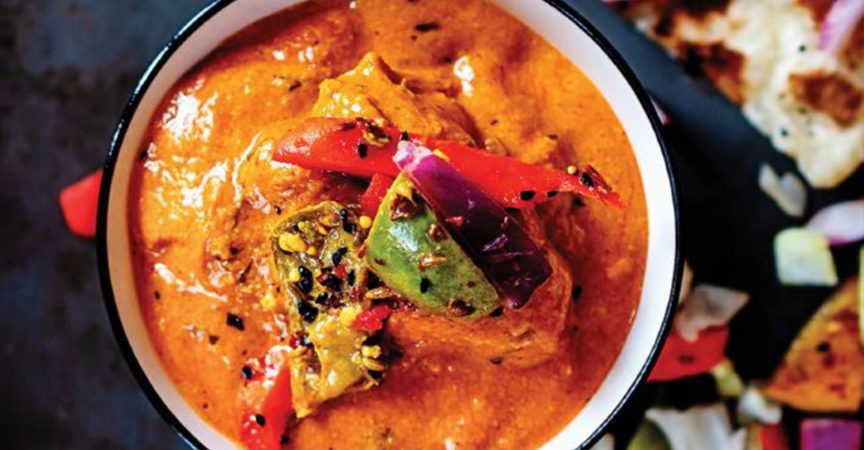Butter chicken: A brief history
Chefs, consumers and restaurant staff alike: if you are in or around restaurants, you will undoubtedly have tasted butter chicken at some point in your life.
First served back in the 1950s, its invention is attributed to three Punjabi restaurateurs, Kundan Lal Jaggi, Kundan Lal Gujral and Thakur Dass, who founded the world-renowned Moti Mahal restaurant in Delhi.
For well over 60 years this dish has been a staple of Indian restaurants around the world, from London to New York, Sidney to Moscow and back to Delhi itself. While millions of people have enjoyed a butter chicken feast, many still don’t know the history surrounding its creation and the story of the three refugees, also entrepreneurs, who headed for Delhi after partition from the Peshawar region.
What is Butter Chicken?
Butter chicken is cooked in a traditional clay oven or tandoor. It’s first marinated in a mix of spices including cumin, turmeric, garlic and ginger, along with yogurt and lemon juice. A tomato sauce with butter and cream is then poured over it. Time and experimentation have inspired many different versions of the recipe which can be found online, many using a variety of different spices.
What you get here is two recipes in one—a traditional tandoori chicken with an added makhani (or butter gravy). The recipe originally made at the Moti Mahal used fewer spices than many of the versions you see today.
The History of Butter Chicken

The story of how butter chicken came to be invented is almost as interesting as the dish itself. The Moti Mahal, in pre-partition days, was a restaurant in Peshawar founded by Mokha Singh Lamba. Both Kundan Lal Gujral and Kundan Lal Jaggi worked there as servers for some years. Thakur Dass was at his family’s rice and pulses wholesale business just across the road from the restaurant.
The Moti Mahal shut down just before partition. During these difficult times, many refugees moved to areas of India because of partition, bringing their various skills and culture with them. Peshawar cuisine was soon to find a new home in Delhi when the chance came to revive the original Moti Mahal in the capital territory. Mokha Singh Lamba, although he was then too old to continue running the restaurant, was happy for the three entrepreneurs to use the original logo and gave his full blessing to the enterprise.
With a growing population of Punjabis in the region, there was a ready-made legion of potential customers who wanted to eat traditional Peshawar fare. The trio began by selling breads and tea but then purchased three tandoors and began serving fish and chicken too.
There’s no doubt that the trials and tribulations that partition created also forged a strong bond between the three entrepreneurs. They wanted the restaurant to work and, though it took a lot of hard work with their wives earning extra money sewing, the intrepid entrepreneurs put their heart and soul into the project. They finally found a shop in Daryaganj in 1947 and raised the funds they needed to start their tea room. As the business began to grow, their fame did too. And the innovations started to come. Cooking tandoori dishes, they were presented with a problem—left hanging, the tandoori dried out and, not wanting to waste anything, the team were searching for a way to make the chicken more moist.
First served back in the 1950s, its invention is attributed to three Punjabi restaurateurs, Kundan Lal Jaggi, Kundan Lal Gujral and Thakur Dass, who founded the world-renowned Moti Mahal restaurant in Delhi.
The simple answer came when a Bengali customer came to the restaurant and tried to order a simple chicken curry. There was only tandoori, but the chef was guided to make a gravy to go with the dish. This initially consisted of cream, butter and tomatoes with a few spices. When they realized that this was the perfect way to rehydrate dry tandoori, butter chicken was born and, from then on, became one of the most popular dishes in Indian cuisine.
Up until partition, the main cooking in Delhi was vegetarian because the majority of the population was Hindu. Gradually, however, chicken was introduced, and Peshawar cuisine became a norm as the demographics changed with the influx of new people and influences. There’s no doubt that this meeting of different cultures led to changes in menus. Butter chicken wasn’t the only example. Soon there was buttered dahl too, and by the 1950s, Delhi had become the center of cooking and innovation in India.
The Moti Mahal also became one of Delhi’s most respected and visited restaurants. It hosted some famous names during the 50s, 60s and 70s. Soviet leader Nikita Khrushchev ate there, as well as American president Richard Nixon. Jackie Kennedy famously dined with JFK, and even the Queen of England paid a visit. Khrushchev used to send out to the restaurant for official events and that led to the opening of a restaurant in Moscow in 1963.
From one restaurant in Daryaganj, the Moti Mahal became a global brand with restaurants from Uttar Pradesh to New Zealand, Saudi Arabia to Tanzania. It is still one of the most recognized names in Indian cuisine.
Why Is Butter Chicken So Successful?
Since it was first created back in the 1950s, butter chicken has traversed the globe. You can find it in practically every town and city where there is an Indian restaurant. Go online, and you’ll discover several hundred different reincarnations of the original recipe, some by the most famous chefs in the world today.
At its heart, though, butter chicken is a simple dish. The combination of a tandoori chicken with a creamy and slightly spicy tomato sauce is mouth-watering. While other, more complex recipes may catch your eye every now and again, the home-cooked, comfort food that butter chicken defines is always going to be a winner.
While the trio of entrepreneurs has since left us, their influence on Indian cuisine and Delhi as a center of culinary excellence remains. They are, perhaps more than any other group of people, responsible for helping to internationalize Indian cookery and put new recipes like butter chicken on the map.
Since it was first created back in the 1950s, butter chicken has traversed the globe. you can find it in practically every town and city where there is an Indian restaurant.
Special Thanks to Amit Bagga and Raghav Jaggi ( Kundal Lal Jaggi’s grandson) Co-Founders of Daryaganj Restaurant, Aero City, New Delhi, India.
Lead Photo Credit: Stacey Newman










Interesting to know the history of Moti Mahal and Butter Chicken.
Hello,
I have just started writing a food blog with some amazing Indian recipes.
Using some content from this page on my food blog. Will provide this link as a credit (back-link) on my blog.
Will be very helpful, if you share the recipes or my blog on your page.